We use cookies to provide you with the best possible service and a user-friendly website.
Please find our Privacy Policy on data protection and data management here
Please find more information on the cookies here
Turning points
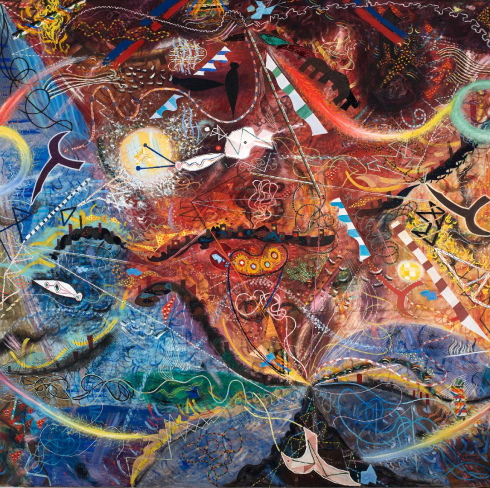
Which picture earned Mihály Munkácsy international fame? What was Tivadar Csontváry Kosztka’s original profession? What other occupation did Aurél Bernáth pursue besides painting? Our guided tour takes visitors on a journey through some examples of non-conventional, innovative and at times unworthily undervalued art of the past 150 years. By looking at a picture each by Mihály Munkácsy, Pál Szinyei-Merse, Tivadar Csontváry Kosztka, József Rippl-Rónai, Aurél Bernáth, Tamás Lossonczy and Mariann Imre, you can gain an insight into the shifts in style and the individual paths artists embarked upon.
Stations
- Mihály Munkácsy: Death Row
- Pál Szinyei Merse: Picnic in May
- Tivadar Csontváry Kosztka: Pilgrimage to the Cedars in Lebanon
- József Rippl-Rónai: Woman with a Birdcage
- Aurél Bernáth: Riviera
- Tamás Lossonczy: Great Cleansing Storm
- Mariann Imre: Saint Cecilia
Mihály Munkácsy: Death Row
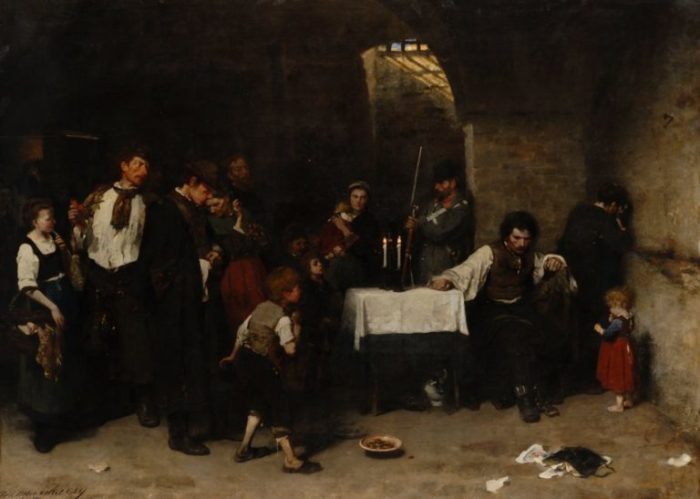
Mihály Munkácsy (1844–1900) earned his first great success with the Parisian exhibition of his painting Death Row. His work showing the last evening of a man sentenced to death attracted massive attention. The oppressive scene composed with dark colours is a profound rendition of the drama of the situation. This romantic and at the same time realistic work made Munkácsy famous across Europe.
Pál Szinyei Merse: Picnic in May
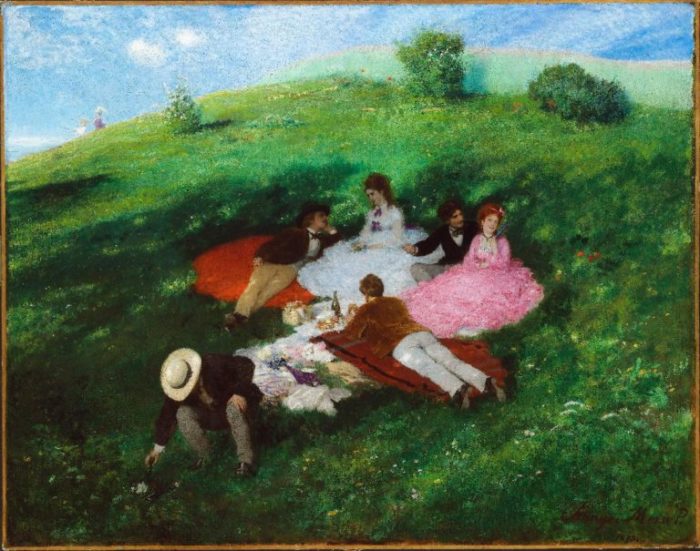
Pál Szinyei Merse (1845–1920) painted his Picnic in May, imbued with a zest for life, in Munich. While today it is praised as the artist’s greatest masterpiece, in its time it was received with little enthusiasm, since the intense colours used in the landscape and the depiction of a party on a picnic equally attracted criticism. After the negative reception of his picture, Szinyei retreated for years and only rarely reached for the brush even in later years. The style of this composition and the atmosphere it conveys can be likened to those of the Impressionists, whose respective artistic careers began at the same time as Szinyei’s but completely independently from his. Picnic in May was admired and was regarded as a referential work by modern Hungarian landscape painting at the end of the 20th century.
Tivadar Csontváry Kosztka: Pilgrimage to the Cedars in Lebanon
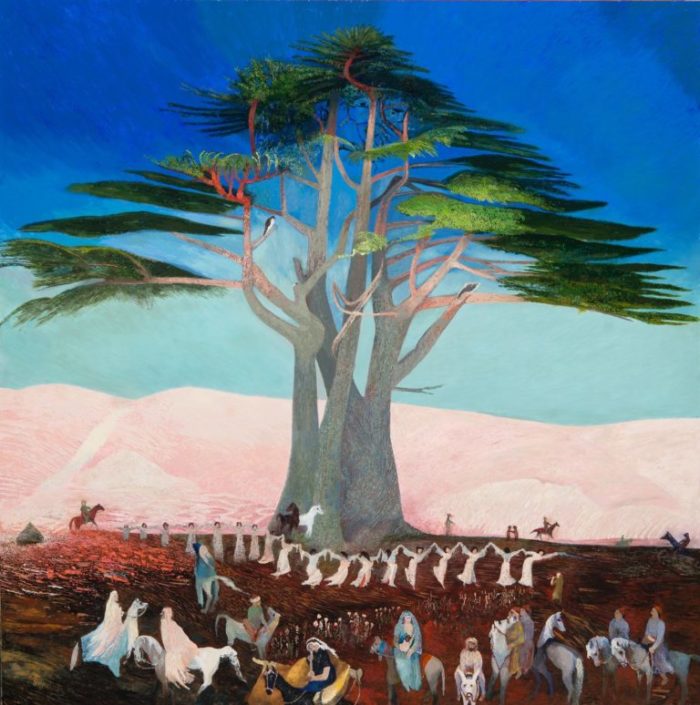
Tivadar Csontváry Kosztka (1853–1919) initially worked as a pharmacist and only started painting at the age of 41 prompted by an inner voice, which set him on a life-long search for the colours of what he called the “sun path”, radiating energy. The theme of his Pilgrimage to the Cedars in Lebanon is unusual in Hungarian art. The picture features an evergreen, sacred tree, around which mysterious riders are gathering and female figures clad in white are dancing. Csontváry’s prophetic works were viewed with suspicion by his contemporaries. His style is a precursor to the intensive palette of Expressionism and the mysteriousness of Surrealism.
József Rippl-Rónai: Woman with a Birdcage
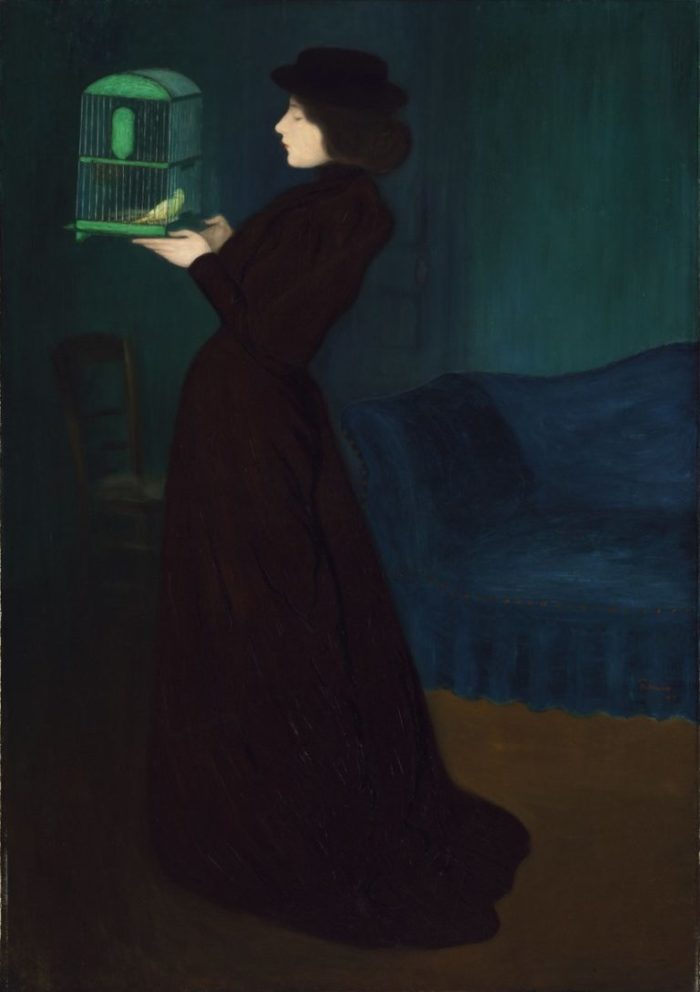
József Rippl-Rónai (1861–1927) painted his special elongated pictures in the most modern style in the 1890s. He displayed his works at a solo exhibition in Paris too, where his career was on an upward path, but later he moved back home to Hungary and settled in Kaposvár, where he had to start from scratch. Mysteriously arising from the dark background of this picture are the face and hands of a fragile Secessionist female figure, while the birdcage she is holding adds further melancholy to the scene.
Aurél Bernáth: Riviera
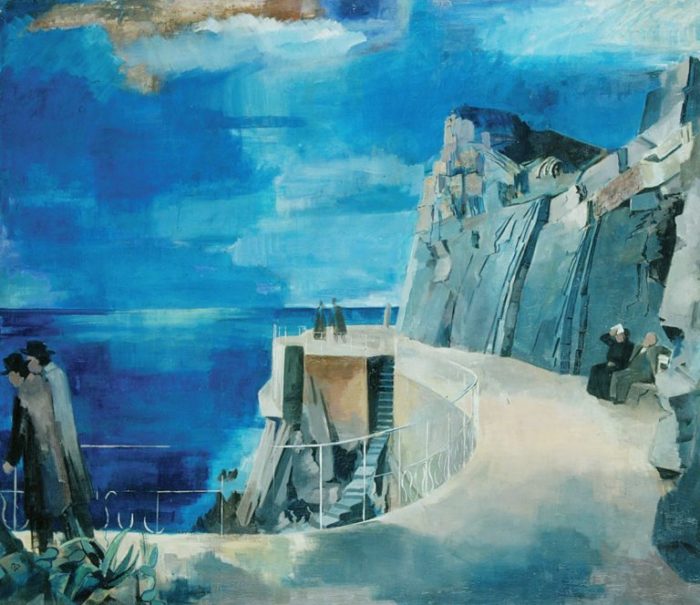
In his art Aurél Bernáth (1895–1982) combined the ambitions of the various isms with the landscape painting of the artists’ colony at Nagybánya. His work titled Riviera was made in Italy, marking the end of his artistic quest. The specialty of this picture is the way in which it makes palpable the airy vista opening towards the endless horizon with the subtle tones of blue. Aurél Bernáth’s role is made especially significant by the fact that the painters of the first and second halves of the 20th century were linked thanks to his teaching activity.
Tamás Lossonczy: Great Cleansing Storm
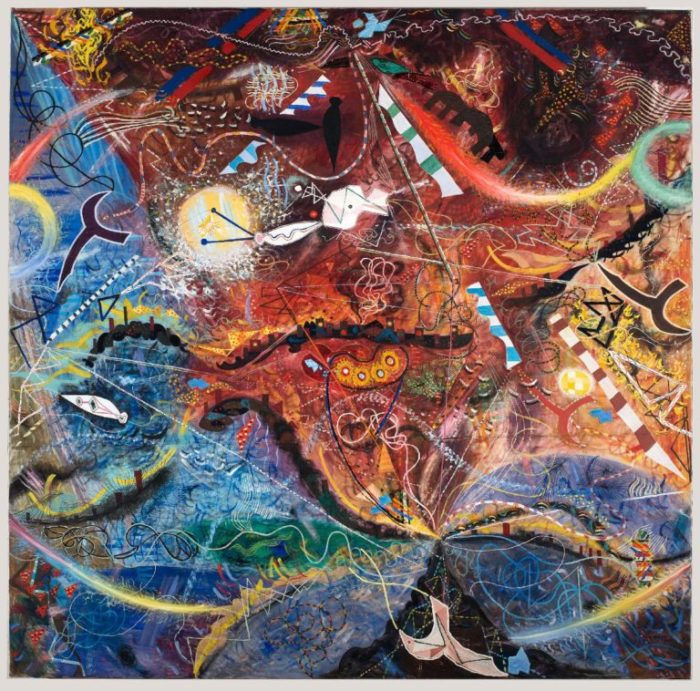
Tamás Lossonczy’s (1904–2009) large-scale picture pays tribute to the great storms of history, which he himself was affected by. The ‘great storm’ in the title was associated with WWII and the revolution of 1956, both in chronological proximity to the making of the painting, so he was not allowed to exhibit this work until 1978. His style interestingly combines the geometrical forms of Abstract art with motifs resembling living organisms. Lossonczy lived through almost the entire span of the 20th century and experimented with its many styles up until his death at the age of 105.
Mariann Imre: Saint Cecilia
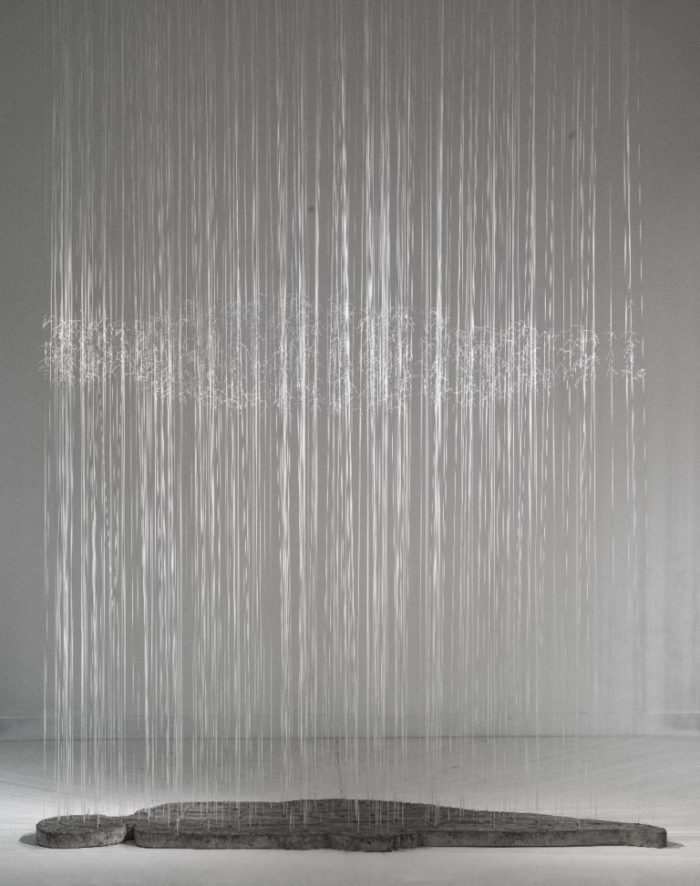
Mariann Imre (1968) set herself the goal of creating artworks with materials that cannot be combined. For example, she embroidered the thread figure of Saint Cecília on a concrete slab to express the historic significance of the mystical story linked to the saint. Standing a bit further away from the work, you will be able to discern the hovering figure of the saint from the knotted threads in the air, above the sculpture.


